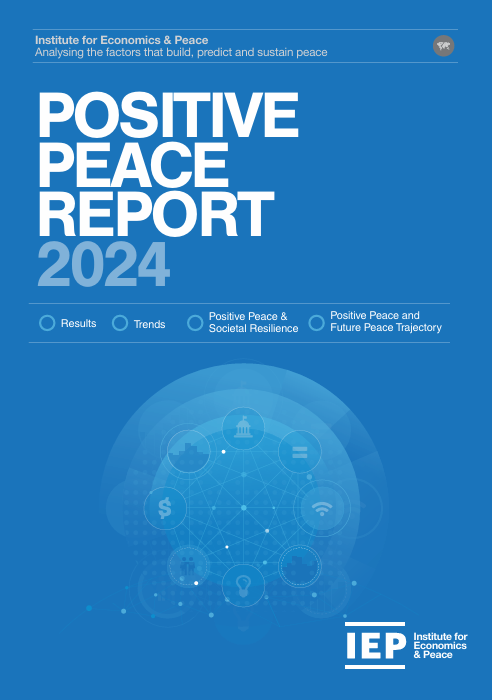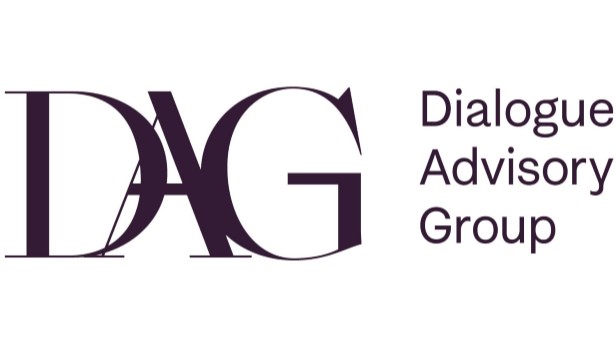The Positive Peace Report 2024 explores the elements that foster, anticipate, and sustain peace across 163 countries. Significantly, it uses the Positive Peace Index (PPI) to evaluate the attitudes, institutions, and frameworks that develop and maintain peaceful societies. Moreover, the PPI is based on eight pillars: effective governance, fair resource distribution, the open flow of information, good relations with neighbors, high levels of human capital, low levels of corruption, a robust business environment, and respect for rights.
126 countries have improved their PPI scores over the past decade, indicating a global trend towards more peaceful societies. However, it also underscores the importance of resilience in fostering and preserving societal progress. Interestingly, Positive Peace can predict notable declines in peace several years in advance. In conclusion, the report emphasizes the importance of Positive Peace as a transformative concept, offering a unique approach to managing human affairs and their wider ecosystems.
Key metrics
Uses numerous metrics to measure peace, notably through the Positive Peace Index (PPI). These metrics form an integral part of the broader framework known as the eight Pillars of Positive Peace, covering different indicators contributing to peaceful societies. The PPI is a comprehensive tool evaluating factors related to peace and societal resilience and offers a complete perspective of peacefulness.
- Inequality-adjusted life expectancy index: This metric measures the overall life expectancy of a population while accounting for the disparity between the average life expectancy of the rich and that of the poor. It reflects the equality of access to the health system.
- Education and income inequality: This metric is measured by governments disseminating false information domestically. It assesses how often governments spread false or misleading information, which can impact societal trust and cohesion.
Trends
Highlights several trends in positive peace identified from 2013 to 2019. These trends underscore the dynamic nature of positive peace and the importance of monitoring and addressing factors contributing to societal resilience and peaceful outcomes.
- Consistent Improvements (2013-2019): During this period, there were consistent improvements in global Positive Peace each year. Countries experienced advancements in various peace-related aspects, reflecting positive societal resilience and peacefulness developments.
- Deteriorations (2019-2022): Unlike the earlier trend, from 2019 to 2022, consistent deteriorations in Positive Peace were recorded each year. This decline was influenced by factors such as the onset of the COVID-19 pandemic, which had significant global economic, social, and health impacts.
- Impact of COVID-19 Pandemic: The largest deterioration in Positive Peace occurred in 2020 following the onset of the COVID-19 pandemic. The global score declined substantially, reflecting the challenges posed by the pandemic and the measures implemented to mitigate its spread.
- Recovery in Positive Peace: Countries with higher levels of Positive Peace experienced a resurgence in peacefulness following the pandemic. The report indicates that the higher the level of positive peace, the faster recovery will occur, emphasizing the importance of societal resilience in overcoming challenges.
- Pillar-Specific Trends: From 2013 to 2019, Positive Peace trends were influenced by progress in Pillars like the Free Flow of Information and Equitable Distribution of Resources, despite deterioration in areas such as Low Levels of Corruption and Well-Functioning Government.
Overview
1 – Results
Presents a detailed analysis conducted by the Institute for Economics & Peace. It provides crucial insights into the global state of Positive Peace, underscoring trends, challenges, and opportunities to bolster peace and resilience across societies worldwide.
- United States Positive Peace Deterioration: Over the past decade, the U.S. saw a 9.1% drop in Positive Peace due to a 33.9% decline in Attitudes and a 3.7% fall in Institutions. A 6.3% improvement in Structures couldn’t compensate for the significant Attitude decrease.
- Pillar-Specific Trends: Over the past decade, five out of eight Positive Peace Pillars worsened, with the Low Levels of Corruption Pillar deteriorating by 30.5%. Other Pillars, like Good Relations with Neighbours, a Well-Functioning Government, and a Sound Business Environment, varied in improvement or deterioration.
- Global Recovery Post-COVID-19: Countries with high Positive Peace levels recovered faster from COVID-19 impacts, showing greater resilience in life expectancy, business, trade, and investment, thus proving Positive Peace as a measure of resilience.
- Metrics and Indicators: Utilizes a range of metrics and indicators to assess peace, including the Inequality-adjusted life expectancy index, education and income inequality, and various Pillars of Positive Peace such as control of corruption, government effectiveness, and freedom of the press.
2 – Trends
Delves into the trends observed in Positive Peace over the past decade, shedding light on the global changes, challenges, and developments impacting peace. In summary, the report provides a detailed analysis of the trends in Positive Peace, highlighting the challenges faced, the impact of external factors like the COVID-19 pandemic, and the resilience demonstrated by nations with higher levels of Positive Peace.
- Positive Peace Pillar Changes: In the eight Positive Peace Pillars, notable declines were seen in Good Neighbour Relations (down 3.8%) and Human Capital (down 1.6%), mainly due to international trade freedom and healthy life expectancy issues.
- Global Positive Peace Trends: Over the past decade, the global Positive Peace score rose by one per cent, with 108 countries improving and 55 deteriorating. The trend showed consistent gains from 2013 to 2019, then declines in 2020-2022, mainly due to COVID-19.
- Domain-Specific Changes: The Structures domain improved over the years, while the Attitudes domain declined 1.3% since 2013. The institutional domain also deteriorated slightly by 0.5%, indicating varied trends in positive peace aspects.
- Impact of COVID-19 Pandemic: The 2020 COVID-19 pandemic significantly reduced global Positive Peace, disrupting international trade, supply chains, and economic activities, impacting indicators like international trade freedom and healthy life expectancy.
- Recovery and Resilience: Countries with higher levels of Positive Peace experienced a faster recovery in Positive Peace post-pandemic, emphasizing the importance of societal resilience and the role of Positive Peace in predicting and mitigating the impacts of crises.
3 – Positive Peace and Societal Resillence
Focuses on the relationship between Positive Peace and societal resilience, exploring how peace influences society’s ability to withstand and recover from challenges. In conclusion, it highlights the critical role of Positive Peace in promoting societal resilience across different dimensions, underscoring the importance of peace in building sustainable, resilient societies capable of addressing challenges and crises effectively.
- Correlation with Societal Resilience: Positive Peace correlates with societal resilience measures like economic, environmental, and social indicators. Countries with more Positive Peace show greater resilience, emphasizing the link between peace and societal well-being.
- Post-Pandemic Recovery: Post-COVID, countries with high Positive Peace recovered faster than those with lower levels, highlighting its role in predicting and facilitating resilience after crises.
- Environmental Resilience: Highlights the link between Positive Peace and environmental resilience, underscoring peace’s role in fostering sustainability, protecting the environment, and bolstering climate resilience. Positive Peace aids in constructing societies that are more capable of handling and lessening environmental challenges.
- Societal Well-Being: Positive Peace links to societal well-being, economic prosperity, and environmental sustainability. Its promotion can bolster a country’s ability to tackle societal, economic, and environmental issues, fostering resilient and sustainable societies.
- Resilience Measures: Uses indicators like economic output, per capita income, environmental sustainability, and social cohesion to assess societal resilience. These measures evaluate how Positive Peace impacts society’s shock resistance and recovery.
4 – Positive Peace and Future Peace Trajectory
Delves into the relationship between positive peace and the future trajectory of peace, exploring how current levels of positive peace can predict a country’s peace outcomes in the years to come. Underscores the importance of Positive Peace in shaping a country’s future peace trajectory, highlighting its predictive power and the interplay between peace levels, shocks, and resilience in determining peace outcomes over time.
- Predictive Power of Positive Peace: Countries with low Positive Peace in 2009 saw deterioration, while those with high Positive Peace improved, showing Positive Peace’s predictive power for future peace.
- Impact on Internal Peace Scores: Countries with rising violence and Positive Peace deficits from 2009 to 2023 saw their Global Peace Index scores decrease. Conversely, those with Positive Peace surpluses in 2009 improved, reflecting Positive Peace’s impact on internal peace dynamics.
- Trajectories and Peace Models: A dynamical systems model predicts a country’s future peace trajectory by tracking its historical GPI and Positive Peace trends. Countries usually fall into ‘Sustainable Peace’ with high peace levels or ‘Conflict Trap’ with low levels. This model has accurately predicted peace outcomes over time.
- Case Studies: Details how Georgia and Venezuela, having similar peace levels in 2009, took different paths thereafter. Shocks leading to Positive Peace deficits could push countries into a ‘Conflict Trap’, highlighting the role of external factors in peace trajectories.
- Resilience to Shocks: Shocks such as political instability or economic crises can sway a country’s peace trajectory. Understanding a country’s Positive Peace levels and resilience is vital to predict future peace outcomes and prevent conflict.
5 – Implementing Positive Peace
Focuses on implementing positive peace principles and strategies to foster peacebuilding efforts at both national and local levels. In conclusion, it underscores the importance of implementing Positive Peace through training programs, collaborative initiatives, and community engagement to foster peacebuilding efforts globally. Organizations and communities can promote peace, resilience, and sustainable development in diverse contexts by adopting a comprehensive and adaptable approach.
- Positive Peace Approach: Emphasizes the effectiveness of the future-oriented, comprehensive, Positive Peace approach. Its global applicability and adaptability suit diverse communities with various needs.
- Training Programs: Provides training in 150 countries through online and in-person sessions, short courses, and educational materials, aiming to enhance peacebuilding, policymaker capacity, conflict mitigation, and peace leadership.
- Collaborative Initiatives: Several organizations partner with IEP for peacebuilding via joint training programs. These initiatives aim at incorporating peacebuilding in development and humanitarian work, devising systemic peace policies, enhancing conflict mitigation strategies, and boosting peace leadership skills.
- Program Duration and Impact: Training programs, lasting from two days to two weeks, provide face-to-face and online sessions. In 2023, sessions were held in thirty countries, addressing peacebuilding needs like reintegrating combatants, setting up inter-faith initiatives, and developing global peace leaders.
- Community Engagement: Positive Peace entails involving local leaders in planning and executing peacebuilding initiatives for better participation and ownership. Forming committees with local stakeholders can boost the success and longevity of grassroots peace projects.
6 – The Halo Framework: A Systems-based Approach to Analysing Societies
Explores the Halo Framework, a method by the Institute for Economics and Peace (IEP) to study societies and their complex dynamics influencing peace and development. Hence, this section highlights its significance in understanding system dynamics and promoting resilience in peacebuilding efforts. Through this systems-based approach, stakeholders can comprehend societal complexities, enabling the creation of sustainable development and peace strategies.
- Systems Thinking: Presents systems thinking as a tool for analyzing social phenomena by recognizing societal systems’ interconnections and feedback loops. It can reveal patterns and interdependencies, enhancing decision-making and policy development in multiple fields.
- Halo Process: IEP’s Halo process is a methodology for mapping and assessing societal systems. It uses stakeholder knowledge and data to evaluate dynamics, test assumptions, and improve resilience. The process provides a detailed analysis of system behaviors, designed to be practical and comprehensive.
- Complementary to Positive Peace: The Halo Framework enhances Positive Peace, offering a theoretical insight into societal system operations, their mapping, and modeling over time and under varying conditions. While Positive Peace provides measurable and actionable methods, Halo emphasizes understanding system dynamics and relationships.
- Practical Application: The Halo Framework allows users to analyze societal systems, identify key features, and study their dynamics using workshops and computer models. It emphasizes understanding the overall dynamics of these systems.
- Societal Resilience: The Halo Framework boosts societal resilience by offering insights into system dynamics and resilience strategies. It helps stakeholders create targeted community peace, development, and resilience interventions.




